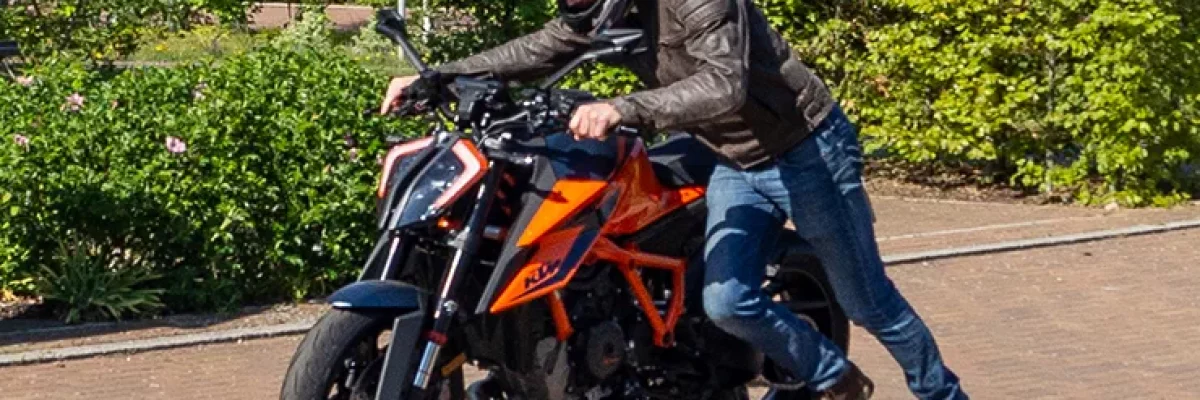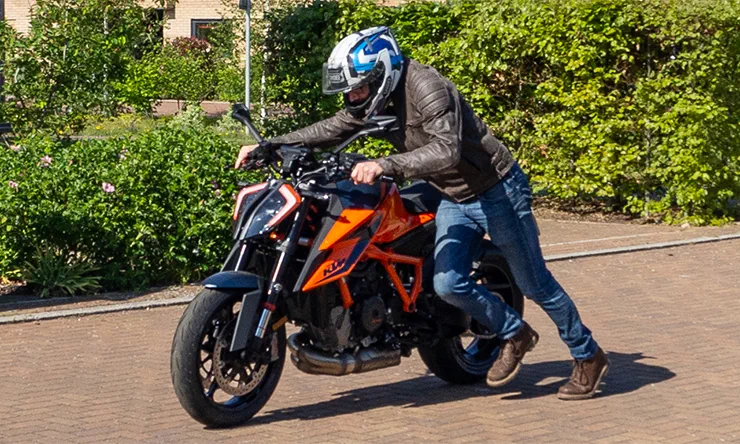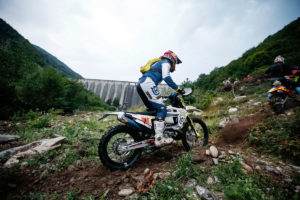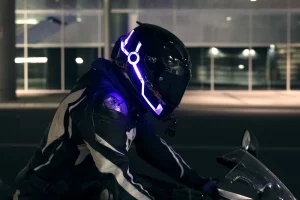What happens when your bike doesn`t start? For a novice riders, this situation is so not ideal and they`ll feel stuck not knowing what to do. The next possible solution that comes to your mind is to push start your bike. Push starting, often called bump starting, is a method used to start a motor vehicle’s engine.
Push starting is putting the manual transmission in the second gear, pushing or letting the vehicle roll at the speed of 5 to 10mph or 8 to 16km/h or more, with simultaneously pressing the clutch to make the engine turn over and start while partially pushing the gas pedal, so it doesn’t stall.
If you have started in second, then leave the clutch or maybe pop it. If you have started in neutral while keeping the lever of the clutch pulled in, simultaneously shift into 2nd, right before starting it. It may not be as beneficial if you feather the clutch and will just act as a brake for your bike. You just have to slingshot the sucker and let it snap into the place.
What is going to happen!
Push starting rumbles back the life to your bike. Now you can easily regulate the speed with the accelerator. This usually happens with smaller bikes that have low compression and contain multiple cylinders.
Machines that are bigger in size have two big jugs or have high compression, may act differently than smaller ones. Due to their big size, they may chirp the rear wheel and start sliding and skidding rather than rolling over due to their big size.
If this may happen, do not worry. Try again and have your friends repeat the process. You will know that you are on the right track when it starts coughing or sputters, or maybe the lights get bright even for a sec.
Suppose the bike is blank or dark and silent. You should not waste your energy on another try.
Steps to Follow
Following are the steps to follow to bring back your dead bike to life!
1. Check for the Issues
The first most thing you should do is check for any other issues that may stop your bike from starting. Before starting the process, rapidly check for the problems that cannot be solved by push-starting may save time in the long run.
As it only takes seconds to ensure that it the motorbike has trouble getting started because the bike might run out of gas or petrol. It can be made sure by simply checking the gas gauge.
Following is a short specified list that you should run through before starting the process. If any of the points is not true, this is one of the reasons your bike is shut down and is not starting.
- The fuel tank is not empty.
- The kill switch turned to ‘run’.
- The kickstand must not be down.
- The petcock must be ‘on’ (specifically for older bikes).
- The transmission must be neutral.
2. Put Your Bike in First or Second Gear
When push starting a bike, you need to keep your bike in relatively low gear. Putting your bike in 2nd gear is recommended as it is the easiest gear to push start it. However, you can also put your bike in 1st gear as it is easier in some cases to push start a bike in its 1st gear as compared to 2nd.
Generally, the bike is in neutral gear when it is parked. However, you can check it by pushing it forward, as the bike will only roll forward when it is in neutral gear, even without the clutch.
To change this neutral gear into 1st on a manual bike, press the clutch while pressing down to foot control. If you want to shift to the 2nd gear, press the clutch while pressing up the foot control.
3. Hold in the clutch, and now Start Pushing.
It is recommended by most of the guides to keep your bike’s speed up to 8kmph or 5mph for an effective push start. You will need to clear the area with any obstacle and open space in front of you. You should also leave someplace on both sides (i.e., left and right side) on the off chance that you are not able to control the bike after it starts.
Now, you can easily achieve push-starting speed by letting your bike roll over the downhill. Now instead of running beside the bike while holding its clutch, you will ride it.
Note that, when attempting a downhill push start, make sure that you do not lose control of your bike.
4. Release the Clutch & Start Your Bike.
When you get the required speed, release the clutch, start the bike in one smooth motion as the bike rolls. Then, throttle the bike in a moderate amount. Moreover, when the bike starts, take control of the bike by holding the clutch so that it may not get away from you.
5. Rev the Engine
As your bike has now come to life, you would not want it to die again. So along with the clutch being depressed, now rev the engine at a mid-level. This would help the battery, and your bike does not go down or choke down.
6. Ride Away
After you have your motorcycle started, it would nearly be impossible to stop unless or until you turn it off yourself on purpose or whether to stall the engine. However, if your battery is drained by riding your bike around, push start isn’t always the only option. You can also rev your engine to restore some or little charge that helps start a bike.
When turning off the bike, ensure to address the basic issue that affected the bike and caused it not to start. When your bike requires push-starting to turn the bike on, it may have problems with the battery or the fuel system that may require the attention of a mechanic. So it is recommended to ride your bike to the nearest mechanic shop when it is on its last legs.
Aftermath
Now, in the end, you should figure out what’s wrong with your battery. First, test it and then charge it or replace it as needed.






